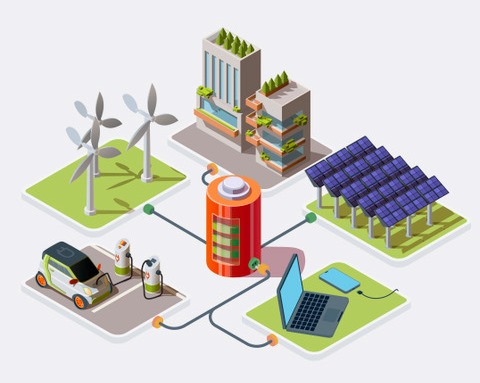
Good weather and the rapid build-up of solar capacity meant that the UK generated more clean energy from the sun by mid-August than it did in the whole of last year. For a short period on July 8th, solar met 40% of the UK’s total needs; between gloomy January and sun-drenched July the average contribution ran at around 10%. But events elsewhere have shown the perils of building renewable generation capacity without accompanying investment in the grid infrastructure. In April, 58m Spanish and other Iberian customers were left without power for up to five hours when the grid shut down. The precise cause and sequence of events are still fiercely contested but no-one doubts that inadequate storage and voltage frequency stabilisation capacity was at the root of the crash.
The UK’s main bottleneck is transmission – crudely, moving power from where it is made (such as Scottish wind farms) to where it is used (further south in England). Last year, wind farms were paid to switch off for 13% of the time they should have generated power, according to the grid operator NESO. That costs consumers £400m. It’s to eliminate those costs that the Grid is developing a number of large-scale pylon and cable projects – the nearest to the Moorlands is in Derbyshire’s Amber Valley. But storage is also a crucial part of the equation, helping even out the supply and demand of intermittent renewable energy over time. It also helps keep the Grid running within a tiny band of the required 50Hz frequency.
Just 8% of the UK’s total battery storage pipeline is operational or under construction – 31% is approved and yet to begin, with the remaining 61% awaiting the green light to go ahead. In its Clean Power 2030 Action Plan, the Government estimated that between 23GW and 27GW of battery storage will be required by 2030, which represents a significant increase from approximately 4.5GW built in 2024.
All regions of the UK face the same general issues, but they are refracted though the particular geography of an area. Staffordshire historically lay at the heart of UK energy generation, with stations along ‘Megawatt Valley’ along the Trent burning day and night on the output of the Midlands coal fields. The last of these, Ratcliffe-on-Soar, shut in September 2024. But the grid infrastructure still bears the imprint. The Moorlands, for example, is dominated by the 400kV high voltage line running up from Drakelow in the Trent Valley to Macclesfield and then up the West Coast to Scotland.
Battery storage typically needs a nearby connection to the Grid; the power line – and the Cellarhead sub-station which bestrides it – has meant a steady stream of renewable projects (including storage) coming to the Staffordshire Moorlands Planning Committee. Much of the subsequent controversy about BESS (Battery Energy Storage Systems) applications centre around safety and any impact on nature. We have outlined the main issues around biodiversity before in our newsletter – arguing that the sites are often biodiversity poor in the first place and are required to deliver a (very limited) 10% uplift under the BNG (Biodiversity Net Gain) legislation.
When it comes to safety, BESS is a relatively new technology at scale and there have been two known fire incidents in Liverpool and Essex. But while there is no standalone legislation for battery storage, the sector is already covered by a slew of regulations overseen by the Health and Safety Executive. What is more, Staffordshire Fire Service has now published clear guidance on BESS safety. Although the Fire Service is not yet a statutory consultee on BESS applications, it does normally comment if asked and it is now common practice for applicants to engage with the service before any decision is due.
